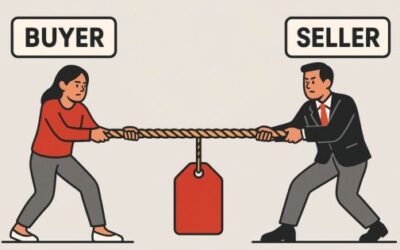Understanding Sales Qualified Leads
What qualifies as an opportunity and how do you identify a sales qualified lead when it comes along? Decision criteria can be all over the place depending on the individual salesperson or the organizational structure. Some folks use BANT, others MEDDIC/MEDDPICC, while some use their own.
Old School Sales Qualification Frameworks
BANT focuses on 4 prospect identifiers to determine their qualification as a strong lead – budget, decision making authority, need, and the timing of their purchase. MEDDIC on the other hand, emphasizes evaluating metrics, identifying the economic buyer, understanding the decision criteria, uncovering the decision making process, identifying the pain points, and finding a product champion in the buying organization. Both of these frameworks offer guidance but do they actually give you a true sales qualified lead at the end of the day? No.
The key factor in identifying a sales qualified lead (SQL) is the level of engagement from the prospect. The ideal SQL has demonstrated a genuine interest and commitment to accompany you on the sales journey. This commitment involves actively engaging with the sales process and showing a willingness to explore your offering further. Without this element, no lead can be considered a sales qualified lead.
While different definitions and criteria can exist and vary, the fundamental requirement for a sales qualified lead is simple and constant. Remember that sales is not about selling to yourself, it is about building a mutually beneficial relationship with the prospect and without their engagement you’re going to fall flat.
Dealing with Unresponsive Prospects
When we’re talking about leads, a lot of times you’ll the phrase “gone dark”. Your prospect has become unresponsive and ceases to participate actively. If a prospect stops returning calls, emails, or attending scheduled meetings you’re dead in the water, the opportunity has been lost and they’re no longer a sales qualified lead. Ongoing engagement from the prospect is essential for an opportunity to be considered sales qualified.
Regardless of the complexity of the qualification criteria, without an engaged buyer, their engagement, and their willingness to embark on the sales journey with you, there is no SQL or sales opportunity.
Simplifying Lead Qualification
Do you need a robust criteria for identifying sales qualified leads? No. There are 4 questions you need to answer: Does a problem exist? Does the customer admit they have the problem? Can you fix the problem? Will they go on a journey with you to fix the problem? We need all 4 pieces of this to move forward, however, ultimately the most important validation of a sales qualified lead is when the prospect explicitly expresses their interest and eagerness to go on the sales journey with you. Only then can the lead be classified as sales qualified. Other positive indicators or assessments should not be mistaken for a genuine sales opportunity.
To ensure that you are working with sales qualified leads, it is vital to focus on the level of engagement and active participation from your buyers. Regular communication, addressing their concerns, and providing relevant information are key to keeping them involved throughout the sales journey. If your prospects are not actively engaging or remaining interested it’s an indication that you do not have a sales qualified lead and it’s time to start considering dropping them from the pipeline. Engaging the buyer and maintaining their involved is a critical aspect of identifying and nurturing sales qualified leads.




0 Comments